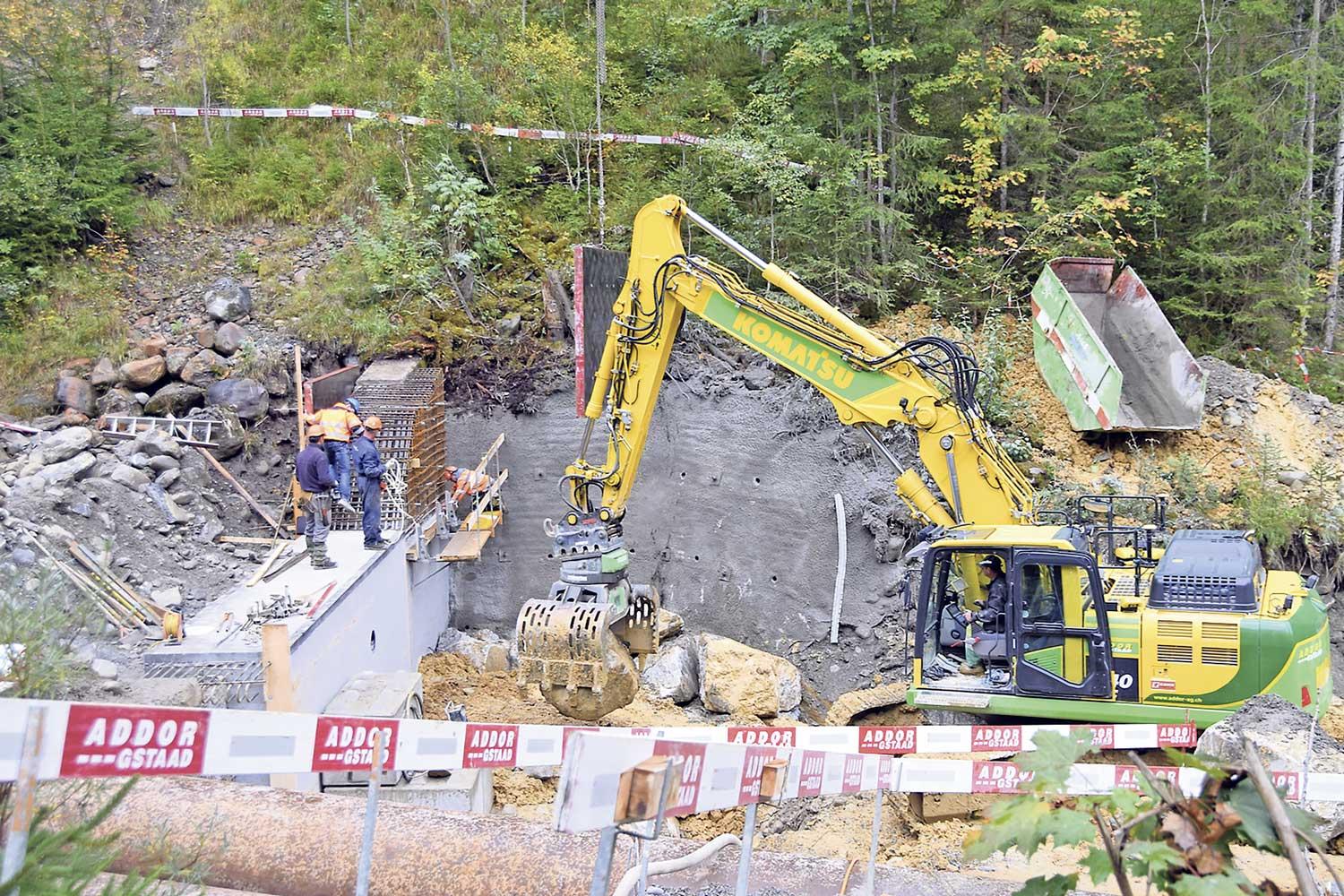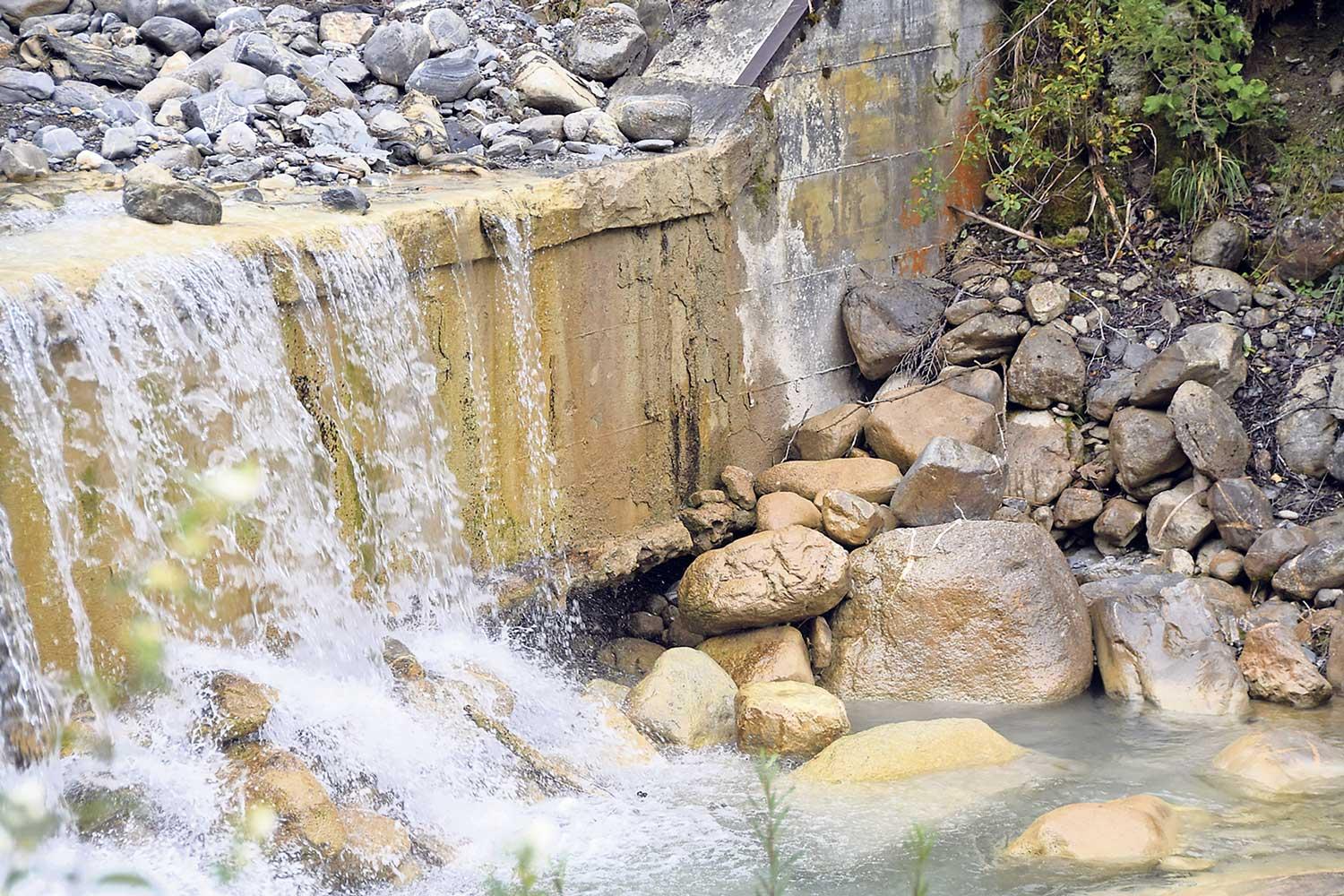The Turbach’s flood defenses are to be strengthened
15.10.2019 Local NewsLocks have been installed several times over the recent decades. To withstand an event on the magnitude of the worst flood in a century, 10 out of the 11 locks will be redeveloped in two stages. One lock will be replaced.
The Turbach currently has a flood control solution without a debris collector. "The existing barriers are actually pretty good, but they need to be renovated to function properly, even if there’s a major flood," explains Beat Brunner, an FH Environmental Engineer and Specialist in Natural Hazards at Emch+Berger AG in Spiez. “The renovation works will secure the river bed. This will prevent large quantities of river bed debris from escaping during big floods." Without this work, the situation in Gstaad could become critical, emphasises the project manager.
Conditions have changed for the worse
The last time the condition of the existing concrete barriers and bank enclosures was checked was in 2013/14. In the meantime, their condition has deteriorated. The barriers are now penetrable and can no longer withstand a flood. "Since the late 1970s, the riverbed has dropped more than two meters in various places." This means all eleven locks need to be restored or replaced.
In the initial works, locks 5, 7, 9 and 10 will be restored and work on locks 1 to 4, 6, 8 and 11 will take place during the autumn of 2020. Construction work began in mid-August, and by Christmas time, the Turbach should be flowing back on its usual course. The same timeframe applies next year. Autumn is the ideal season for such work, explains Brunner. In spring, there’s more water from the melting snow. In the summer, thunderstorms can also cause flooding. "But in November, we can generally predict the water levels and thunderstorms are rare." Whether the planned timeframe will work depends on the progress of the construction and the weather. If there’s a sudden water surge due adverse rainfall, construction work may have to stop. "So far, we’ve made good progress," says Brunner.
A cost of CHF 6m
The costs of the renovation work are estimated at around CHF 6m. The federal government and the canton will pay 60 per cent of these. The remaining 40 per cent of the costs – around CHF 2.4m – will be paid by the owner, the Schwellenkorporation Saanen (Saanen Flood Corporation).
Building on the riverbed is costly and challenging, says the project manager. Excavations are up to eight meters deep and the bed is partly made up of clay. In addition, the banks must be secured to prevent a collapse that could endanger construction workers. The river also needs to be diverted in sections with a drainage system.
Close collaboration with specialist departments
The local fishing association has been involved in fishing the river before the start of the construction work. "Before and after the water diversion, we carry out various checks in cavities for fish, which are then released further up or lower down the river," says Brunner. As soon as the water can run back into the riverbed, the fish will return.
To ensure approval of the project, specialist cantonal departments were involved right from the start. "Basically, renovation work must be executed such that fish can thereafter still move up and down the stream," says Brunner. Various specialist agencies have discussed the matter with the federal government. The upshot is that the Turbach can’t be completely fish-friendly. "At the moment, the barrier levels are too high. We can’t be fish-friendly while renovating the Turbach due to the steep gradient," explains Brunner. However, the Turbach is an exception. During the renovation of the Louibach in Gstaad, the new construction work will be fish-friendly.
Based on AvS/Anita Moser
Translated by Justine Hewson






